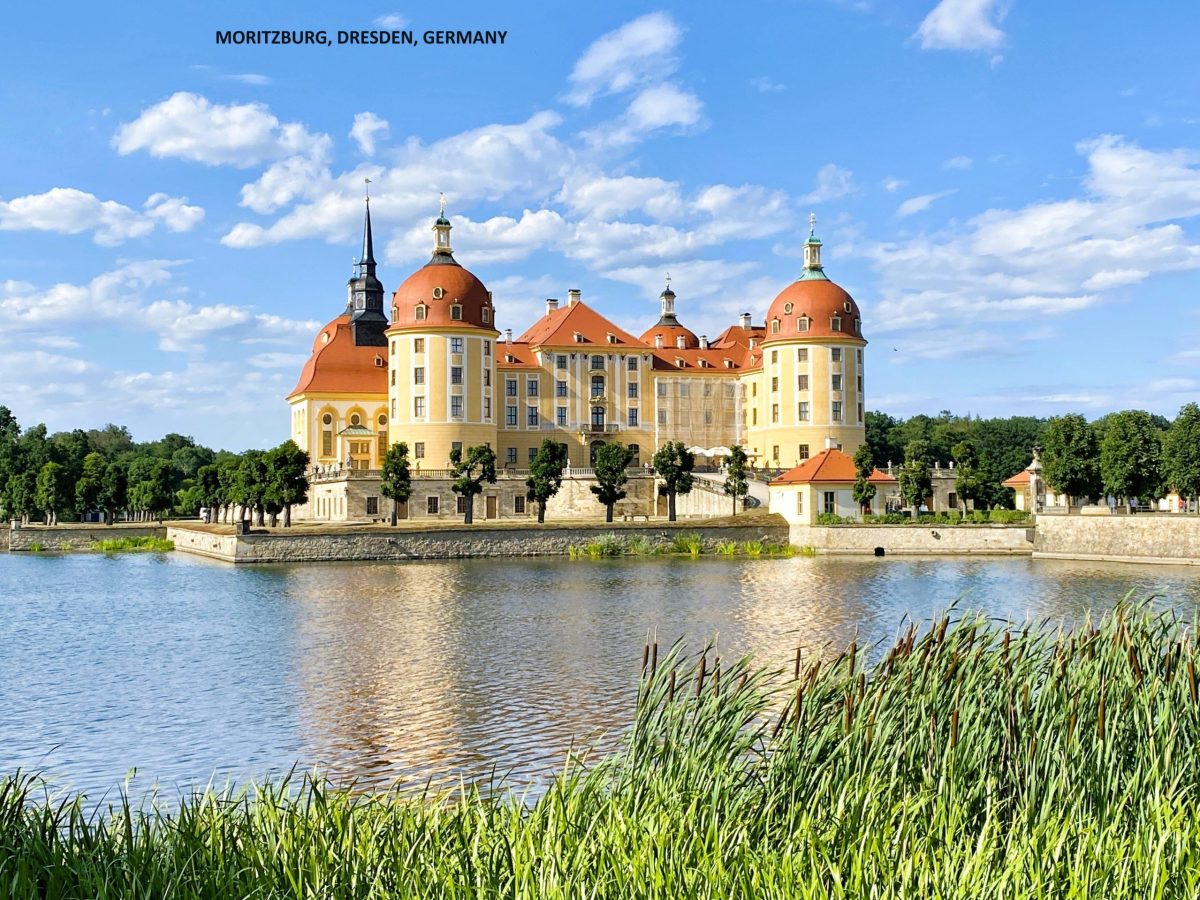From our campsite in Lahnstein we enjoyed a pleasant excursion to the small town of Boppard on the left bank of the Rhine. Ordinarily, that drive would require our crossing the Rhine near Koblenz and driving up the left bank of the river to Boppard but; major roadworks just outside Lahnstein required that we follow the right bank (along Rheinuferstrasse) to the tiny hamlet of Filsen and then take the Filsen-Boppard ferry across to the left bank. That suited us. It’s a quicker and more direct drive from Lahnstein to Filsen and; out of season there is ample parking by the small ferry terminal. The small ferry seemed to run every half hour and it proved a delightfully quick and inexpensive crossing.
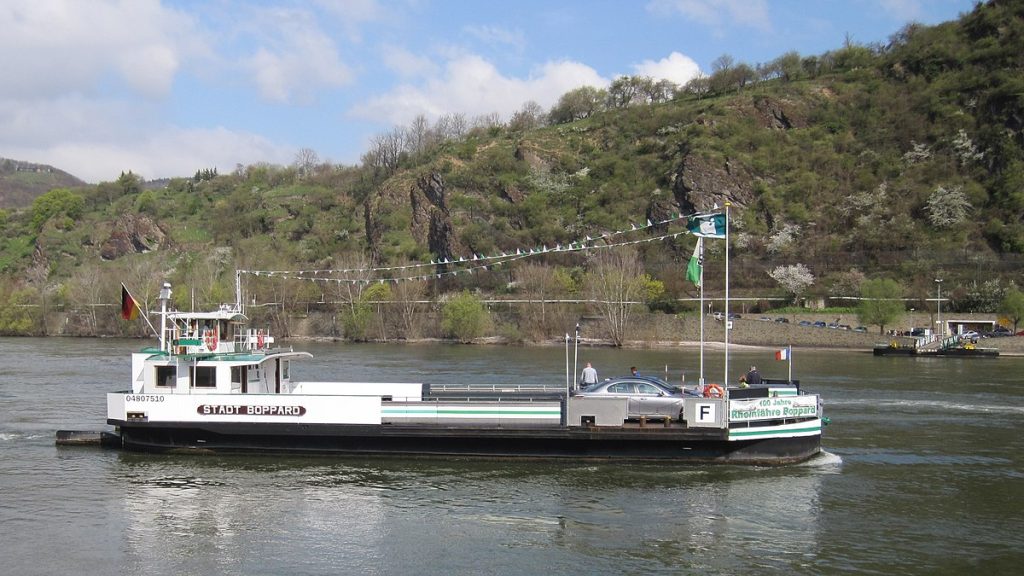
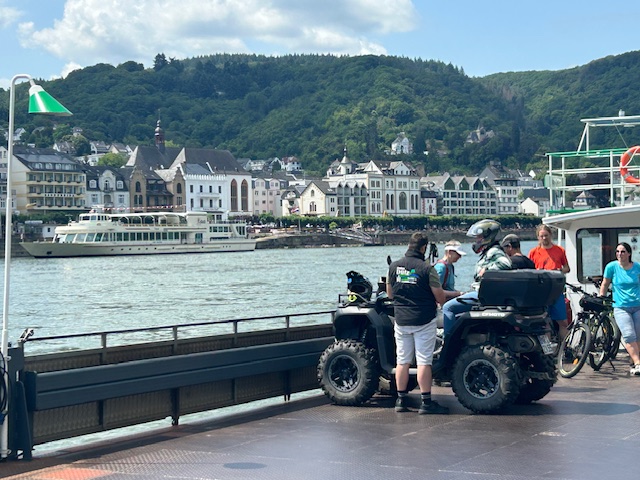
We nearly visited Boppard once before. While staying in Bacharach during Tour 6, Boppard was recommended as a place to visit by a local. We were up for it but missed the boat and the later one (which we did take) went only as far north as Sankt Goar and, on the other bank, Sankt Goarshausen. We very much enjoyed that boat trip.
The stretch of the river on which Boppard (and Sankt Goar) stands, is classified as the Upper Middle Rhine Valley (the Rhine Gorge) and this whole area is a listed UNESCO World Heritage Site. It is full of fairy tale towns & castles, vineyards & wine and hills & hiking although; this time we were there simply to enjoy Boppard. There has been a town on this site since well before the Romans arrived (the ruins of the Roman Fort in the town date back to Julius Caesar) but, for the most part, the existing buildings in the old town (that’s the stretch between the river bank and the railway line) date from the 17th and 18th centuries. It’s a fair sized and picturesque town.
Of course the first thing Vanya did upon entering Boppard’s old town was to find an ice cream parlour which served Spaghetti Eis but I’ll not dwell on that. We wandered the length and breadth of the town for a while, taking time out for lunch on the pretty and mostly pedestrianised Marktplatz and, again, for high tea at a riverbank cafe on Rheinallee. And why not? Vanya had started our trip to Boppard with Spaghetti Eis. It was only fair I should end it with apple cake.
The Marktplatz, with it’s many half timbered houses and restaurant-bars, is dominated by the town’s principal landmark, the 12th/13th century Saint Severus Church. It’s an elegant, twin spired building with many interesting features throughout and; easily, the most impressive church of all those I have seen on this part of the Rhine.
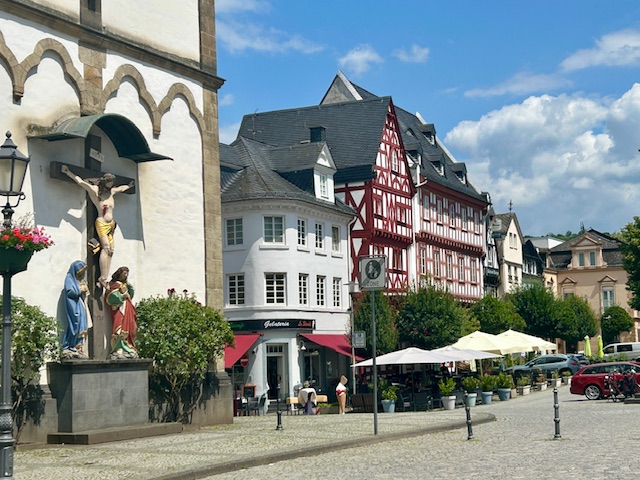
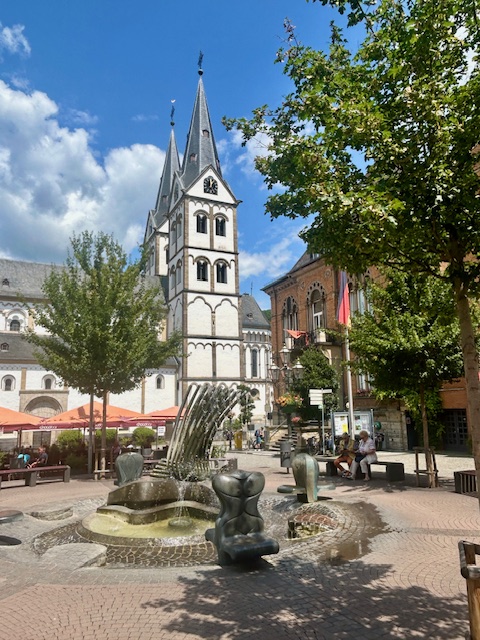
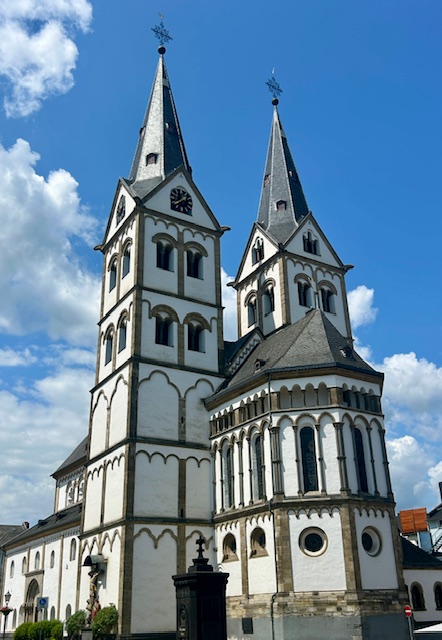
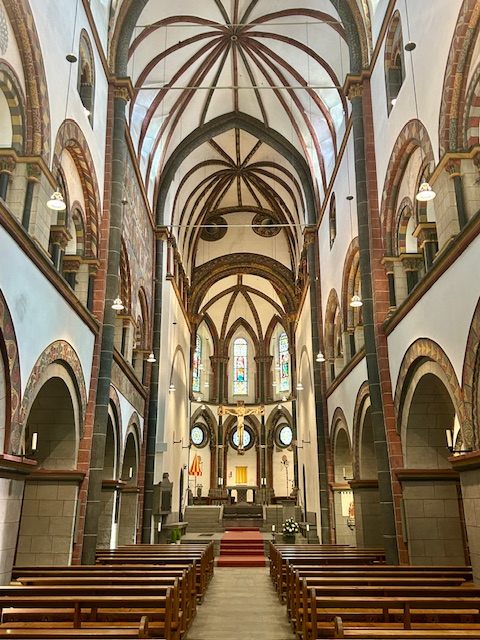
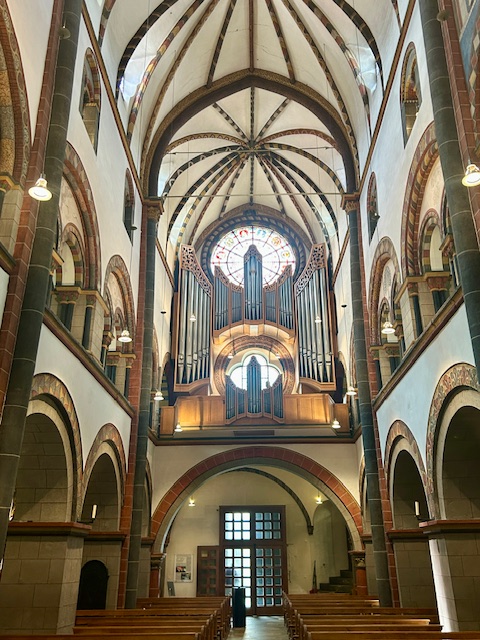
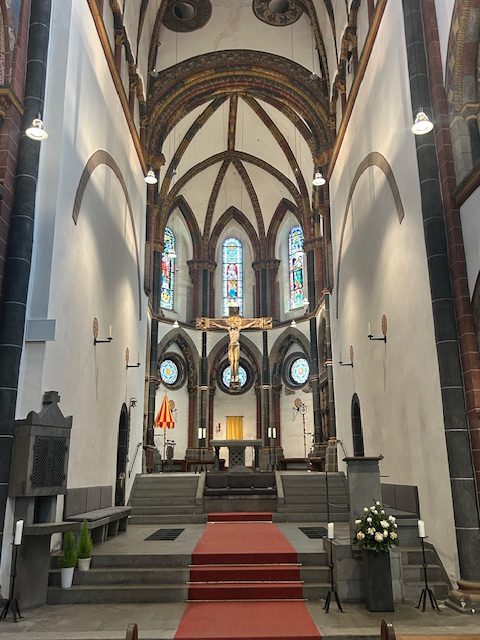
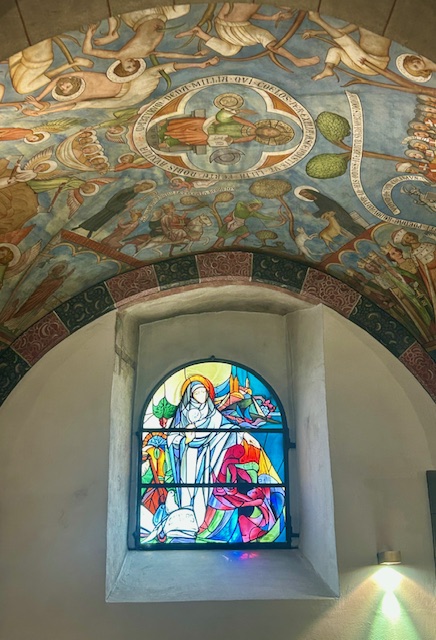
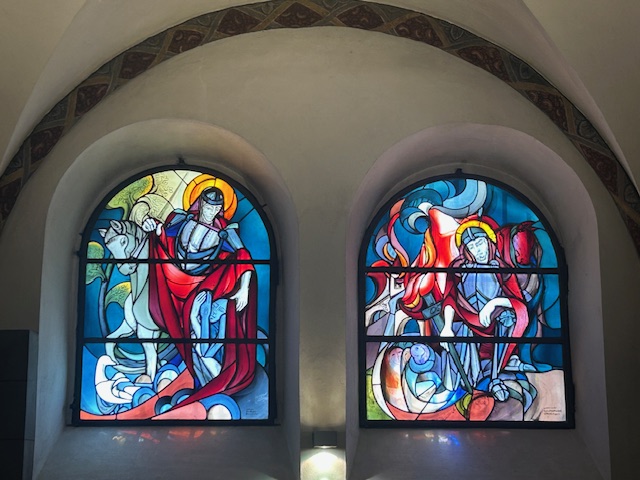
Another interesting religious building is the 14th century Carmelite Monastery or, to be more precise, the church of the former Carmelite Monastery since the principal monastery buildings now serve as the town hall. Fascinating might better describe this particular church. It’s spartan exterior is wholly at odds with it’s almost ostentatious interior. It is brimming with so many charming features and artifacts; the wonderfully intricate 15th century choirstalls; it’s 14th century carved altarpiece; it’s many 13th century frescoes and wooden panels; numerous elaborate flags and; my favourite, the unusual and very austere stone pulpit. I could have spent ages in that place.
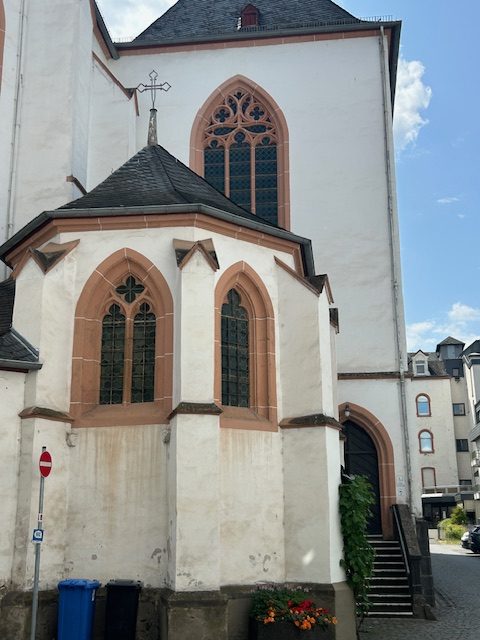
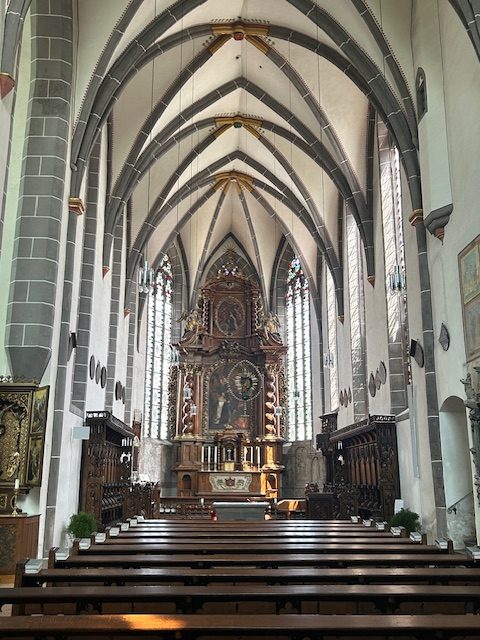
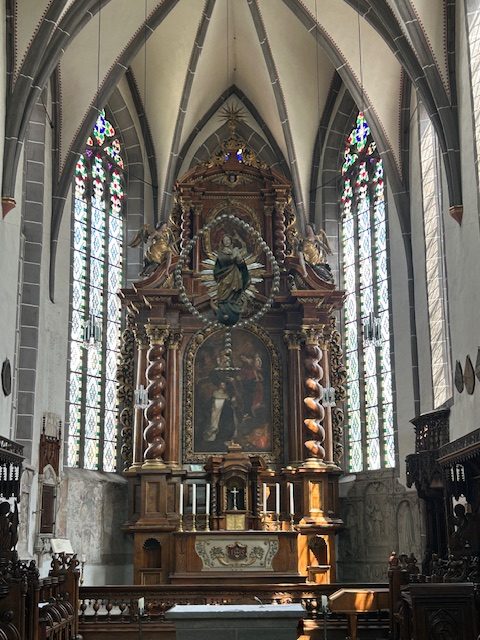
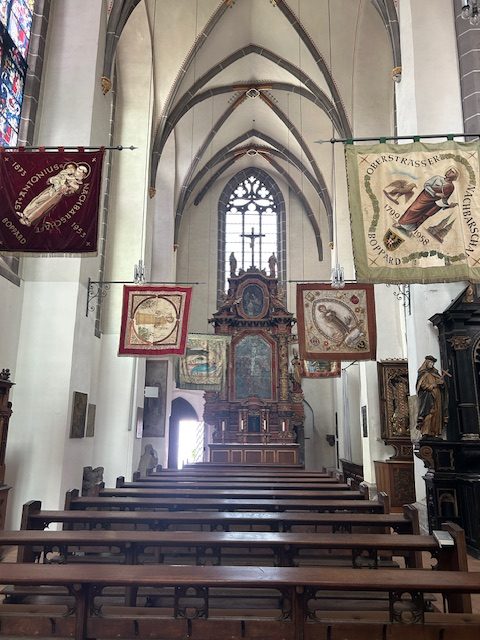

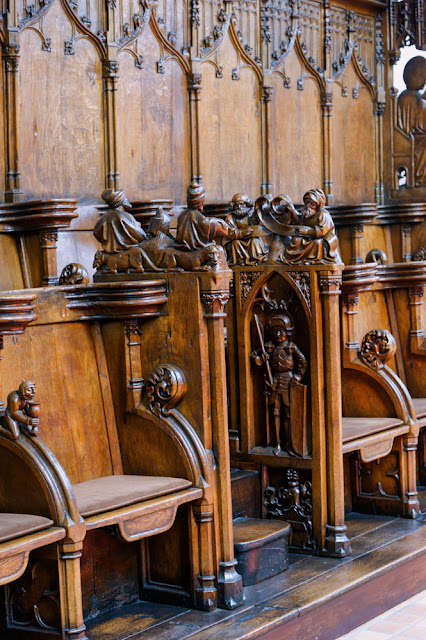
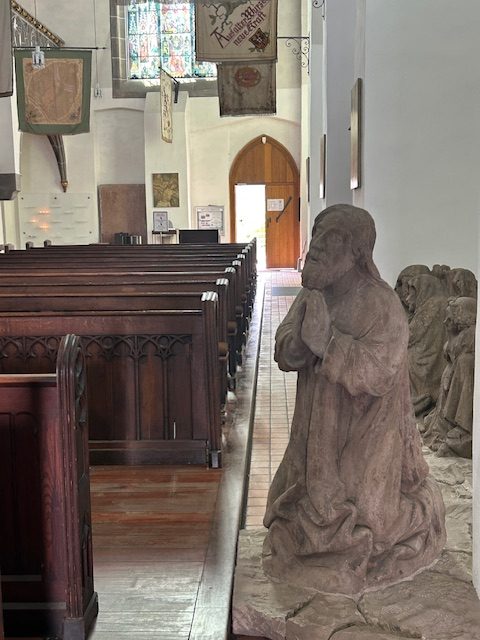
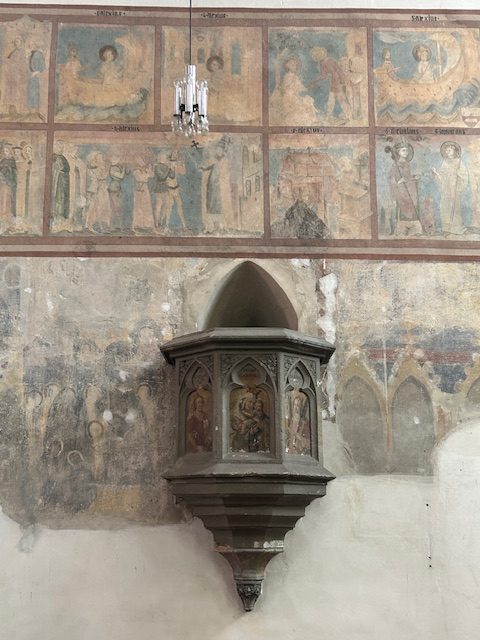

Another building worth a mention is the Kurfu:stliche Castle; otherwise known as the Electoral Castle of Trier. It’s not a castle in the true sense of the word (it doesn’t have any real defensive capability) but was built as an official station to collect river tolls. It has since served as a police station, a prison and even as a hospital. It is now a museum. If you’re looking for a defensive castle, there are plenty of them strung all along the Rhine and, of course, Boppard has the remains of it’s Roman Fort. I couldn’t get a decent photo of this building (I was the wrong side of the river) but the one below (a Getty photo I believe) is as good as it gets.
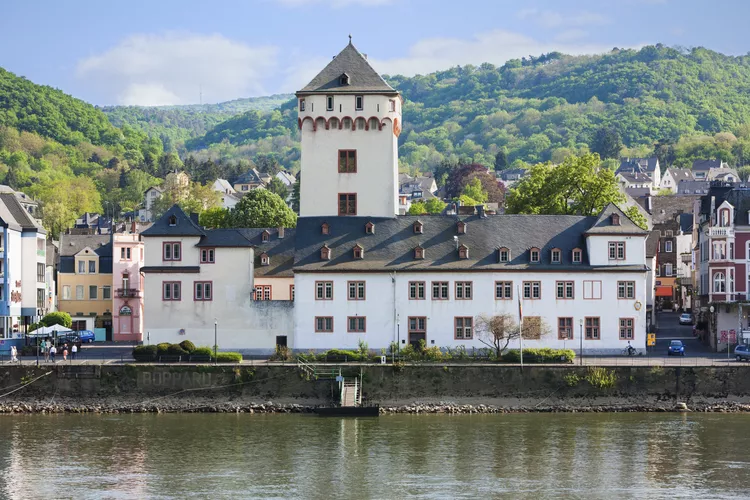
I mentioned at the outset that this is a good area for hiking. Indeed, there’s 200+ miles of hiking trails (and an alpine via ferrata) in the immediate area. I understand that much of the walking is through forests and vineyards but there are numerous rest areas and ‘Aussichtspunkte’ which facilitate great view over and along the Rhine.
Boppard even operates a Sesselbahn (chairlift) between April and October which for just a few Euros provides access to three very good viewing points to the north of the town. In just 20 minutes the chairlift travels 915 metres, with 232 metres of height gain, to the Gedeonseck View Point (with it’s a restaurant-bar and a tremendous view up the Rhine). From the Gedeonseck it is a short walk to the Vierseenblick View Point (also with a restaurant and so named because it presents a view of four different stretches of the Rhine which can make the Rhine look like a lake) and; further still, is the real prize of the Bopparder Hamm View Point (for a panoramic view of the largest loop of the Rhine). There’s a path underneath the chairlift for those with a fear of heights.
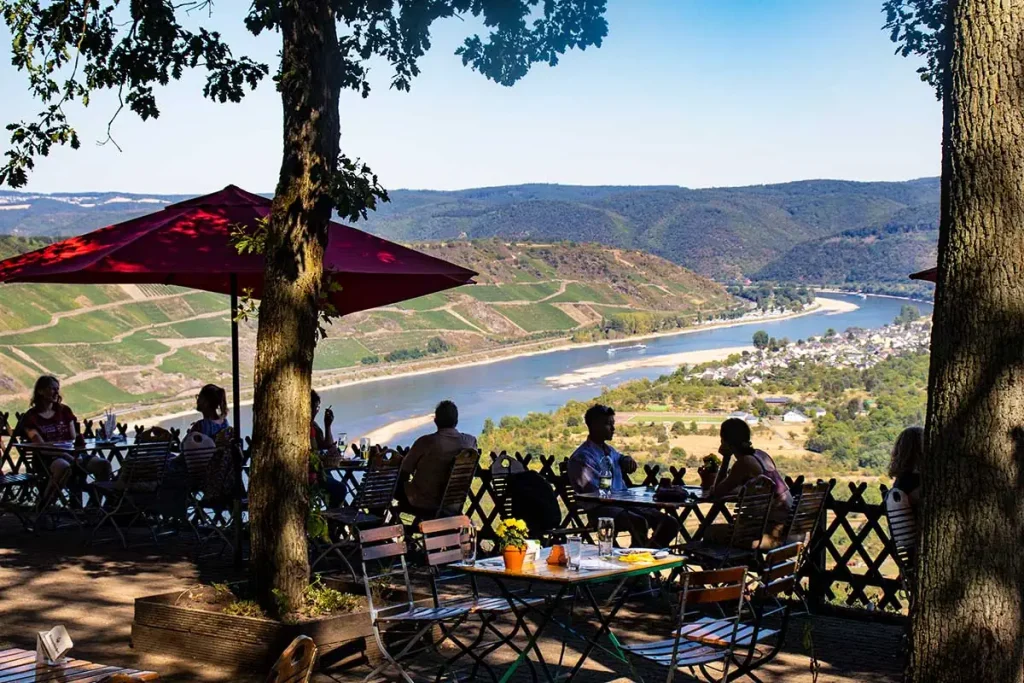
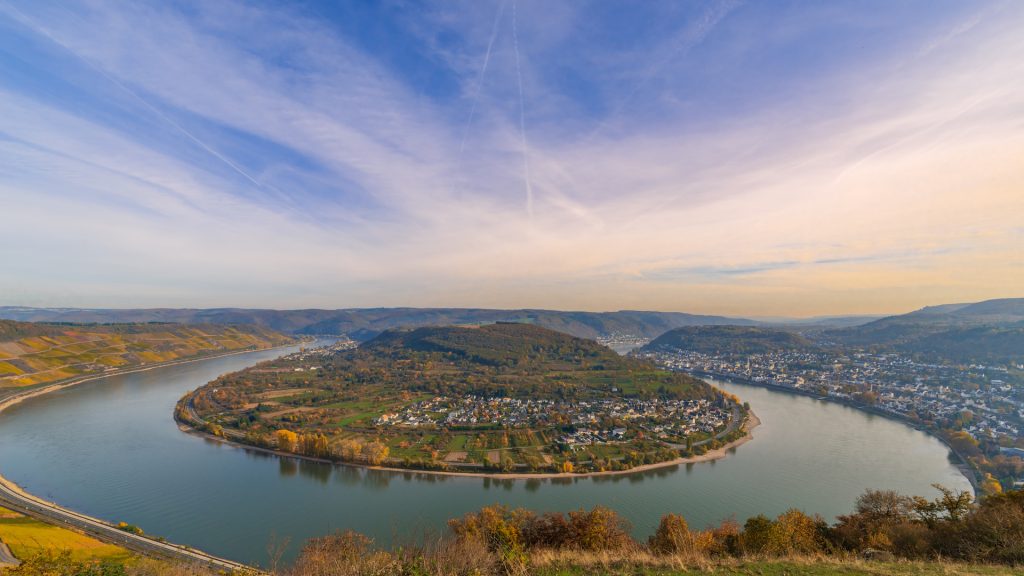
And the via Ferrata? It too is just to the north of the town with excellent views of the Bopparder Hamm. It has 11 climbing sections of varying difficulty and offers sensational views of both the Rhine Valley and the Hunsrück Mountains.

